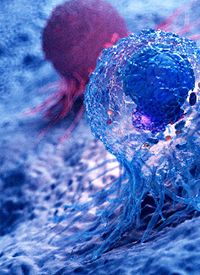Article
Daratumumab Maintenance Is Safe, Feasible After Salvage Transplant in Multiple Myeloma
Author(s):
Daratumumab maintenance therapy with or without pomalidomide provided a tolerable and feasible treatment option after salvage hematopoietic stem cell transplantation in patients with relapsed multiple myeloma.
EHA Congress: © SciePro - stock.adobe.com

Daratumumab (Darzalex) maintenance therapy with or without pomalidomide (Pomalyst) provided a tolerable and feasible treatment option after salvage hematopoietic stem cell transplantation (auto-HCT) in patients with relapsed multiple myeloma, according to results from a phase 2 trial (NCT03622775) presented at the 2023 EHA Congress.
However, of note, the study was terminated early due to low accrual.
“Maintenance therapy is considered standard of care after upfront autologous hematopoietic stem cell transplantation for patients with newly diagnosed multiple myeloma. However, there is a paucity of data on the use of maintenance after a salvage auto-HCT, whether first or second,” Oren Pasvolsky, MD, Department Of Stem Cell Transplantation & Cellular Therapy, The University of Texas MD Anderson Cancer Center, Houston, and colleagues wrote in their poster presentation.
Therefore, Pasvolsky et al aimed to evaluate whether maintenance therapy with daratumumab, with or without pomalidomide, would improve progression-free survival (PFS) after salvage auto-HCT.
Maintenance Daratumumab
In total, 3 patients received maintenance therapy with daratumumab alone and 10 patients were given daratumumab plus pomalidomide.
From the date of auto-HCT and from the start of maintenance therapy with daratumumab, with or without pomalidomide, median PFS was 31.9 months (95% CI, 31.3-not available [NA]) and 28.5 months (95% CI, 26.3-NA), respectively.
At study entry, 6 patients (46%) experienced a complete response (CR), 4 (31%) had a very good partial response (VGPR), 2 (15%) had a partial response (PR), and 1 patient (8%) had stable disease (SD).
At day 100 following maintenance therapy, 9 patients (69%) experienced a CR, while 1 patient each (8%) had VGPR, PR, and SD. In addition, 1 patient (8%) experienced progressive disease.
Among the 12 responses to maintenance daratumumab, with or without pomalidomide, best response was CR in 10 patients (83%), and VGPR and SD in 1 patient each (8%).
After a median follow-up of 10.6 months (range, 5.7-43.9) from the start of maintenance therapy, 3 patients progressed. However, the investigators noted that no deaths have occurred so far.
The most common any-grade adverse events included neutropenia (84%), bacterial infection (46%), and diarrhea, fatigue, and thrombocytopenia (38% each).
Trial Background
Patients received subcutaneous daratumumab weekly for weeks 1 through 8, followed by every 2 weeks for weeks 9 through 24, and then monthly from weeks 25 until progression; pomalidomide was administered at an oral dose of 2 mg from day 1 through 21 for every 28-day cycle. In addition, the study authors noted that patients were given herpes zoster prophylaxis for the duration of the trial.
Investigators aimed to enroll a total of 56 patients. Those with prior exposure to daratumumab or pomalidomide were included in the study; however, patients who were refractory to either drug were excluded from the trial.
PFS served as the primary end point of the trial, and disease response and minimal residual disease were also evaluated.
The trial only recruited 13 patients between May 2019 and August 2022, and was terminated due to poor accrual.
Median age was 64 years (range, 43-76). The majority of patients were male (54%) and White (69%).
The median range of previous lines of treatment was 2 (range, 2-4). Six patients (46%) previously underwent auto-HCT, while 7 patients (54%) had a hematopoietic stem cell comorbidity index of >3. Further, 5 patients (38%) reported with high-risk cytogenetic abnormalities.
Previously, 8 patients (61%) received melphalan alone, 4 patients (31%) had received busulfan and melphalan, and 1 patient (8%) was given a combination of gemcitabine, busulfan, melphalan, and panobinostat as their conditioning regimen.
The median time from diagnosis to salvage auto-HCT was 58.3 months (range, 7.6-132).
Reference
Pasvolsky O, Patel KK, Bashir Q, et al. Daratumumab-Based Maintenance in Patients With Relapsed Multiple Myeloma After Salvage Autologous Hematopoietic Stem Cell Transplantation. Presented at: EHA Congress 2023; June 8-11, 2023; Frankfurt, Germany. Abstract P1303.









